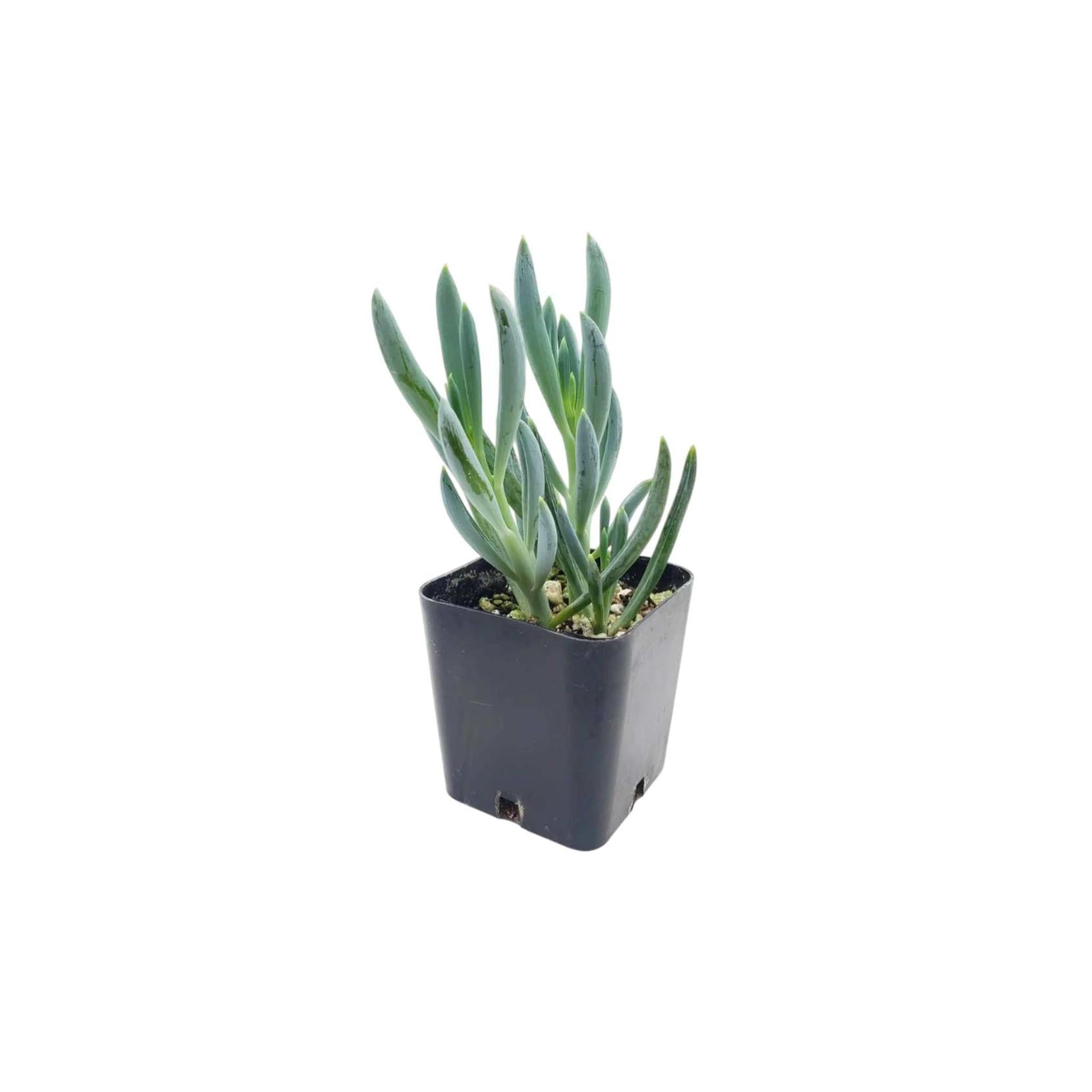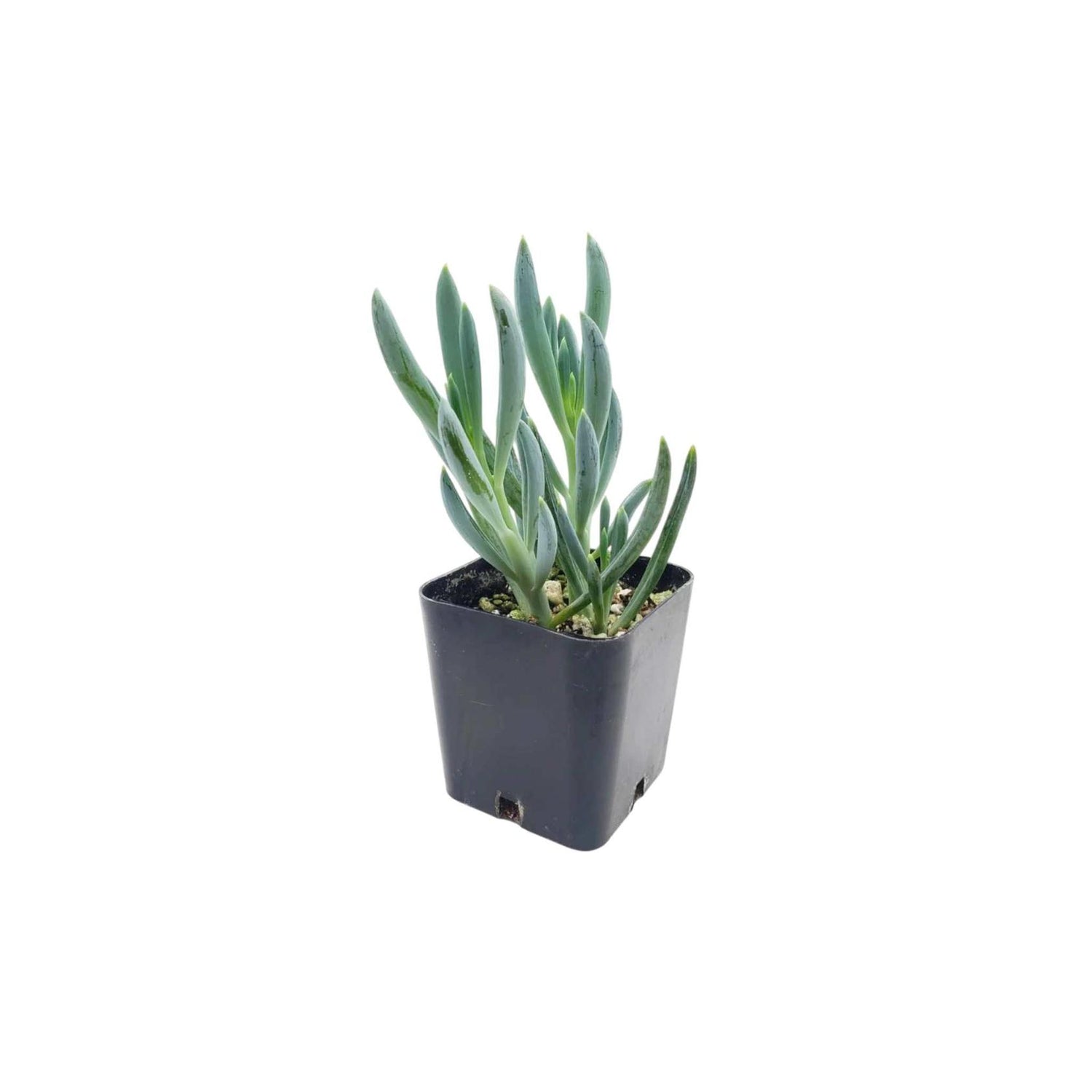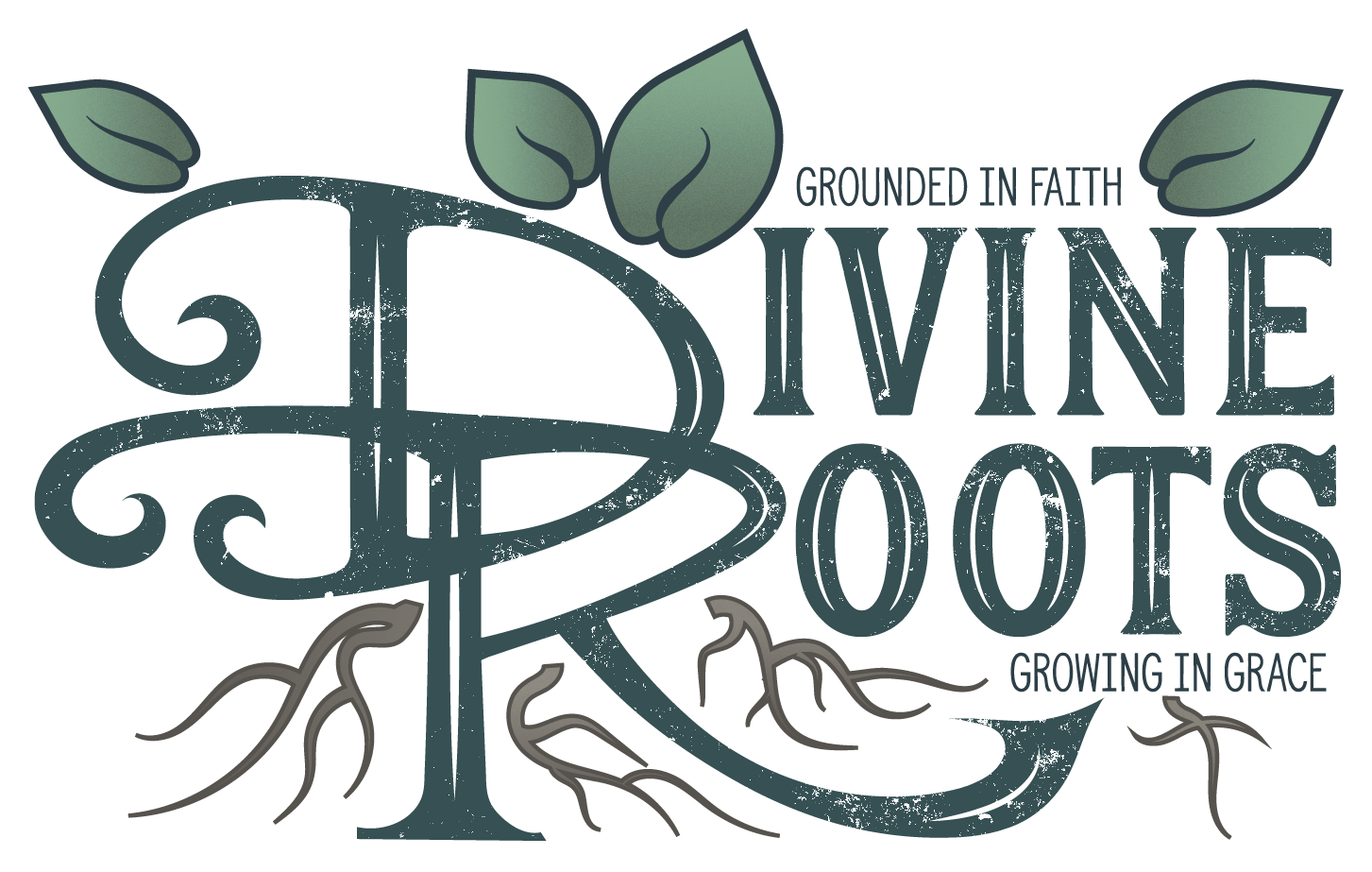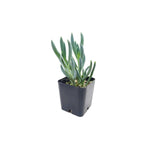
Senecio Mandraliscae Blue
$12.79
Unit price perEstimated delivery between 13 October and 15 October.
At Divine Root, we are committed to delivering healthy, high-quality indoor plants to our customers. While we do not accept returns due to the perishable nature of live plants, we offer a 30-day plant health guarantee and store credit for qualifying issues. Please read our Refund Policy carefully to understand how we handle concerns regarding plant health, shipping, and order

Blue Chalksticks Care Guide & Presentation
Pet Safe
No
Water Needs
Low
Sunlight
Full sun
Hardiness Zones
9-11
Temperature
60°F to 80°F
Suitable Space
Bright patios, sunny windows, rock gardens
Humidity
Low
Plant Class
Succulent
Plant Type
Perennial
Plant Characteristics
Blue Finger-like Leaves
Genus
Senecio
Fertilizing
Monthly
Re-potting
2-3 Years
Cleaning
As needed
Propagation
Stem cuttings
Senecio Mandraliscae Blue: Overview
The Senecio Mandraliscae, commonly called Blue Chalksticks or Blue Finger, is a striking succulent native to South Africa. Belonging to the Asteraceae family, it is celebrated for its slender, cylindrical leaves that resemble blue-green chalk pieces. These powdery, finger-like leaves grow in upright clumps and spread horizontally, forming dense mats up to 12-18 inches wide and 12-18 inches tall. In summer, mature plants may produce small, white or cream-colored daisy-like flowers, though the foliage remains the main attraction.
This drought-tolerant succulent thrives in sandy, well-draining soils and is ideal for adding a bold, architectural element to rock gardens, coastal landscapes, or modern decor. Compared to Senecio serpens, which has shorter, more compact leaves, the Mandraliscae variety features longer, curving foliage with a silvery-blue hue.
Senecio Mandraliscae Blue: Benefits
- Drought-tolerant: Thrives in arid conditions with minimal watering.
- Ground cover: Forms a dense, spreading mat to suppress weeds and control erosion.
- Ornamental appeal: Adds striking blue-gray contrast to gardens or containers.
- Low maintenance: Requires little pruning or fertilizing.
- Coastal resilience: Tolerates salty air and sandy soils.
Senecio Mandraliscae Blue Care Guide
Light and Water
- Light: Prefers full sun (6+ hours daily) for vibrant color. Tolerates partial shade but may become leggy.
- Water: Water deeply but infrequently every 3-4 weeks in summer. Let the soil dry completely between waterings. Reduce to monthly in winter.
Soil and Fertilizing
- Soil: Use a gritty, well-draining cactus/succulent mix (e.g., 50% potting soil + 50% perlite/pumice).
- Fertilizer: Optional, apply a diluted balanced fertilizer (5-10-5) once in spring.
Temperature and Humidity
- Temperature: Hardy in USDA zones 9-11. Tolerates brief frost down to 25°F (-4°C) if kept dry.
- Humidity: Thrives in dry climates; avoid high humidity to prevent rot.
Pruning, Propagating, and Repotting
- Pruning: Trim leggy stems to maintain compact growth. Remove spent flower stalks.
- Propagating: Take stem cuttings or divide offsets. Let cuttings callous for 1-2 days before planting.
- Repotting: Repot every 2-3 years in spring if root-bound. Use shallow, wide containers.
Common Problems
- Root rot: Caused by overwatering. Ensure pots have drainage holes and the soil dries fully.
- Etiolation (stretching): Insufficient light leads to sparse growth. Move to a sunnier spot.
- Mealybugs: Treat with neem oil or insecticidal soap.
- Powdery mildew: Improve airflow and avoid overhead watering.
Senecio Mandraliscae Blue: Best Locations & Uses
- Rock gardens: Pair with red or golden succulents like Sedum or Echeveria.
- Slopes and banks: Stabilizes soil with mat-forming roots.
- Coastal landscapes: Tolerates salt spray and sandy soils.
- Modern containers: Add vertical interest to patios or balconies.
- Drought-tolerant lawns: Replace grass in arid climates.
Note:
Toxic to pets and humans if ingested. Keep out of reach of cats, dogs, and children.


